LASA








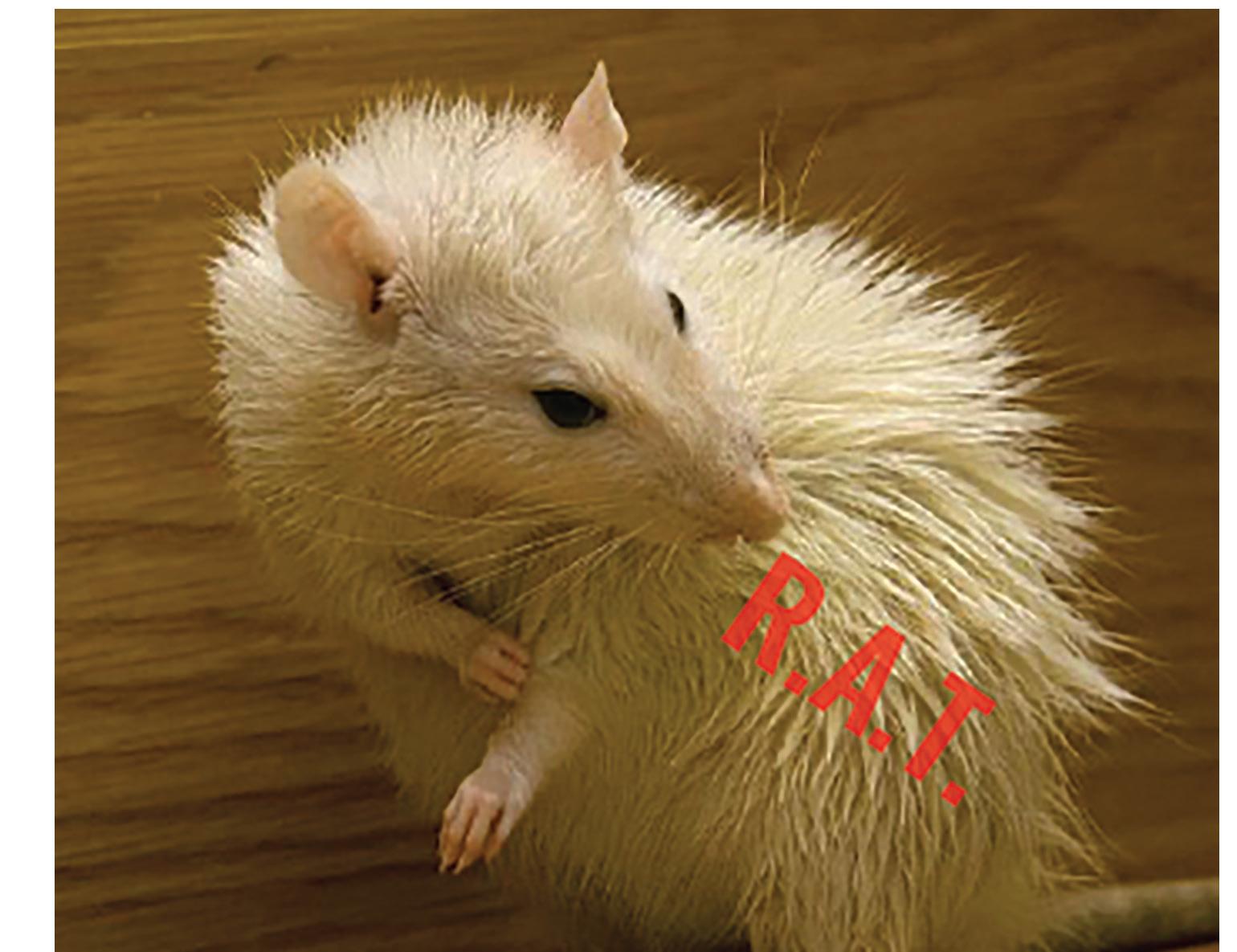




Cole (AKA-Lord Cole Charles Marberry Johnson - that’s his real name, and there’s even more after that) is an expert in birds and would like to write about the topic of birds. Cole likes to play D&D and likes to needle felt because it’s fun and creative. Cole will go to college but doesn’t know what he wants to enroll in. There are many topics in the world that make it hard to pick what to be in life. Cole has five cats that he really loves a lot and is really smart and “imaginative.”
Safira Silva-Hernandez is a musical and artistic virtuoso. She is crafty in her practices with the viola and enjoys listening to music and drawing because they accompany her and her brilliance. Safira aspires to be a doctor after she graduates “summa cum laude.” Specifically, she would like to be a surgeon, saving people’s lives with her radiant prowess.

Ryder is a strange person. Ryder likes D&D and is a “small but zealous religion leader.” He wants to stop something called the “Ilumignomi.” We believe that this is an organization similar to the illuminati, but with gnomes. He thinks that they run the world’s governments and also deleted New Zealand. He wants to write about a wildlife documentary called Deep in the Heart of Texas. His favorite color is orange, and he wants people to call him Ryder. Only time will tell what this menace to society will accomplish.
Zach is a seemingly simple man, but really an intelligent and suspicious one. He is an alleged partisan for a mysterious organization trying to raise the dead of extinct animals because he believes this will be a net positive for the human race and for the resurrected species. Additionally, he wants to “educate” others on the de-extinction process via a mysterious ASF. When asked his hobbies or career interests, Zach gave quite vague answers, only adding to his simple yet mysterious character. Finally and fortunately for all species, he is not a believer of the ilumignomi cult which only compliments his genius and bravery.
The legendary Kai Benton would like to “create an article about sustainability in the cattle industry” and an ASF about the top five most dangerous or most rare animals. He likes to play chess, even though he sucks at it, because he likes learning tactics and analyzing positions. He also enjoys playing the guitar which he has been doing since the second grade. For some reason, he wants to be a geo-engineer when he grows up. Allegedly, he is the best in the nation in his age group for Certamen which is literally just a latin version of quiz bowl. His favorite color is green, but his father doesn’t work in the forest. Weird.


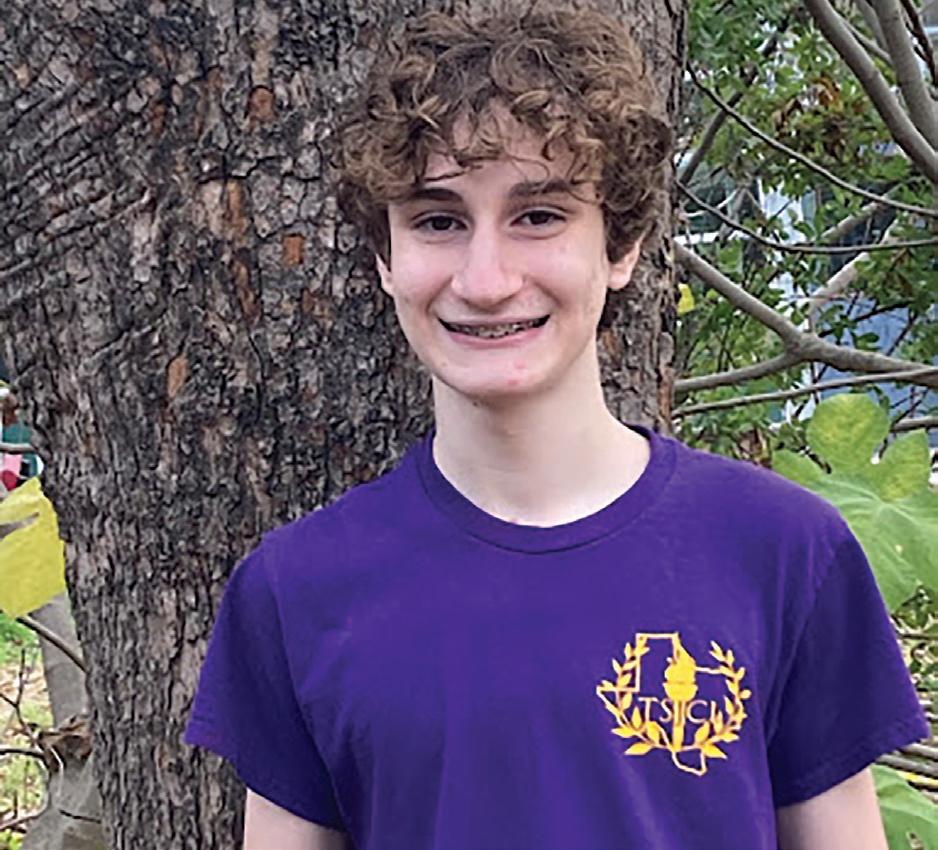
 By: Safira Silva
By: Safira Silva

On the cover: Illustrations from each of us of animals in our feature stories or ASFs lie in the foreground. The backgroud is a stunning photograph of bats from northern San Antonio.

 By: Kai Benton
By: Cole Johnson
By: Ryder Armstrong
By: Kai Benton
By: Cole Johnson
By: Ryder Armstrong


How a Texas company is resurrecting an extinct animal.
You tightly grip the handlebars of the helicopter. The screeches and roars are faint under the powerful winds of the rotor blades, but you don’t fail to see the unexplainable and beautiful sight: dinosaurs of all kinds living in their natural habitat.
Unfortunately, dinosaurs are impossible to de-extinct, but some animals aren’t. This is why a company is working to de-extinct those that it can.
In Australia, thylacines, large carnivorous marsupials, were known as “sheep killers’’ because they were seen as a threat to domestic sheep and farm animals. In 1888 the Tasmanian Government placed a £1 bounty on them, and soon enough, overhunting and habitat loss caused thylacine numbers to plummet, draggin the marsupial wolves into extinction. However, a Texas company, Colossal Biosciences, and their partner, the Thylacine Integrated Genomic Restoration Research (TIGRR) Lab have come together to develop the technologies to undo this human-caused extinction.


Ben Lamm is an entrepreneur and the CEO of Colossal Biosciences, a company that he started with George Church that was officially launched in September of 2021. Lamm said that between now and 2050, fifty percent of all biodiversity will be lost because of manmade extinction events.
“Modern conservation techniques are really important, and they do work, but they just don’t work at the speed and scale that humanity destroys the planet,” Lamm said. “So we’ve got to develop better tools and technologies for thoughtful disruptive conservation, and species restoration and even de-extinction.”
With his skills and past experiences, Lamm has put together a great team for Colossal Biosciences.
“We really have amassed an incredible team of internal top scientists from around the world, as well as external scientific advisors, executive advisors, and conservation advisors,” Lamm said. “And we’ve really built a multi-discipline, cross functional team that’s highly collaborative, and highly transparent, highly inclusive.”
Colossal Biosciences is currently working on bringing back both the wooly mammoth and the thylacine. Lamm said that the thylacine was a keystone predator in southern Australia, and bringing it back would help the ecosystem restore back to its natural state.
“The concept is called ‘trophic downgrading,’ where you return a keystone species, specifically a predator, back into an ecosystem to help restore it to its more natural state,” Lamm said. “There’s been really famous rewilding examples, like the rewilding of wolves ............ back into Yellowstone National Park.”
Currently, Colossal Biosciences team is doing the computational biology and animal gene editing while also funding the TIGRR Lab’s research.
“Because this was a human influenced extinction, as opposed to a natural extinction,” Dr Newton said, “I think that if we have a possibility to bring back these animals to re-correct the wrongs of the past, I believe that we have an obligation to do so.”
Newton said that their research is cutting-edge. He said that there’s no history for their kind of work, and that it’s never been done or attempted before. He believes that their research is important for many
reasons.
“First and foremost is if we can bring back an extinct animal, that would be an absolute technological breakthrough,” Newton said. “Secondly, if we weren’t successful, or if we were sort of only able to get part of the way through this really complicated process, all of the things that we learn along the way are going to have immense benefits for humanity as it stands.”
........
Newton said that if the TIGRR Lab can start to develop the technology to bring back animals or re-engineer genetic diversity into a population, it would have real-world conservation benefits to start and be able to manage the species that are threatened at the moment.
“On top of that, the genome engineering that we’re going to be having to undertake to do this kind of work has huge applications for medicine and applied health,” Newton said. “If someone develops a tumor, this is because of damage to the DNA.
Dr. Axel Newton is a team member of the TIGRR Lab at the University of Melbourne. He believes that they have an obligation to bring back the thylacine.If we can figure out ways to correct those kinds of damages, then perhaps we can generate therapeutics for human health and medicine and diseases.”
Newton said that the technologies they’re going to need to develop to achieve their grand goal of bringing back the thylacine are going to be very important to humanity as a whole.
“The important thing is to consider why. Is it necessary to do that? I think it’s important that we don’t get ahead of ourselves just because we can,” Newton said. “I mean, Jeff Goldblum said it in Jurassic Park, right? The last thing we want to do is have this technology and then get super blasé about letting our animals go extinct because we can just be like: ‘Oh, we’ll bring them back one day.’”
However, developing these technologies isn’t going to be easy. The TIGRR Lab has had to develop new ways to overcome the new problems they’ve encountered.
“We’re very early in this process, we haven’t gotten too far along the way,” Newton said. “However, one problem that we had is that all of our work is contingent on using a recipient marsupial, a surrogate marsupial. So because we’re talking about bringing back an extinct animal, we need to have an alive animal or cousin of some sort that we can use to reengineer the genome or to learn more about its DNA function.”

Newton said that the surrogate marsupial they’re using is the fattailed dunnart, a close relative of the thylacine. He said that they have a colony of these at the University of Melbourne, but they are not behaving the way they want them to.
“Our animals are not breeding very well. We don’t have lots of babies and young coming through which is really important and contingent .. ..... on our colony having really good health,” ....... ..... .. Newton said. “So in the absence of having animals at the moment, what I’ve had to do recently is devise a strategy in a way that we
can start to look at some of these genome regions, but in the absence of using any tissues.”
Newton said that he’s developed a new way to look at these genome regions that’s going to be completely done in the absence of animals.
“We can start to address some really important questions,” Newton said. “It’s sort of thinking a little more laterally to what we would be thinking usually.”
De-extinction requires years of experience and advanced technology, requiring hard thought. However, this is not the case for preventing extinction.
Stuart Pimm is a professor at Duke University and is also a world leader in the study of extinctions. He said that preventing extinction is simple and that there’s a lot of ways to prevent it.
“We can restore habitats,” Pimm said. “I spend my time helping people around the world restore habitats and plant trees. How much does it cost to plant trees? How much does it cost to offset your carbon emissions? The answer is about $100 a year.”
Pimm said that for only $100 a year, you can plant around fifty or a hundred trees.
“If I only paid $100, I would spend more money on coffee than saving the planet,” Pimm said. “Now, I actually put a lot more money into planting trees and that, but your average sort of middle class American likely spends more at Starbucks than he or she needs to do to save the planet. Saving the planet should be quite cheap.”
CT scan of pouch young with false-colored brain, lungs, heart, liver and esophagus (top). Digital reconstruction of pouch young skeleton (bottom). https://royalsocietypublishing.org/doi/10.1098/rsos.171914 Courtesy of the Thylacine Integrated Genomic Restoration Research Lab.The important thing is to consider why. Is it necessary to do that? I think it’s important that we don’t get ahead of ourselves just because we can.
He said that he’s very busy restoring habitats, planting thousands of trees a month around the world in places such as Columbia, Ecuador, Brazil, Tanzania, Indonesia, and India.
“I’m hoping to expand what we do,” Pimm said. “I think there’s a lot of things that we can do in the places around the world where species are going extinct. I think we can stop extinctions by doing sensible things.”
Pimm said that he has a very optimistic view of the world in the future. He said that species are becoming extinct a thousand times faster than they should be, but he also believes that we can reduce that number and that we can make a difference.
“There’s a lot of evidence that we can bring species back from the brink,” Pimm said, “and I want to continue to work to make sure that more species survive.”
Pimm said that newer generations should be able to enjoy the world as much as he’s been able to enjoy it, and by destroying species, they won’t be able to.
Preserving the thylacine is an important step to take after successfully bringing back the thylacine, and Lamm said that they’ve already started to work on these processes.
“It’s really key to work with local governments, with federal governments, with large private landowners, and [with] conservation groups, and even [with] indigenous people groups, and so we work really closely with all of those now,” Lamm said. “So even though we don’t have animals, like the thylacine to reintroduce back in Tasmania, we’ve already started those conversations, and we’re working very very closely with these various groups.”
Newton said that he’s just staying focused on this big goal.
“For now, I’m just focusing on that goal. But realistically, if we’re able to achieve this incredibly ambitious aim, I think that the world is your oyster,” Newton said. “We can really start to change the way that we think about threatened species management.”
Newton believes that in the future, they’ll complete this huge and long endeavor. “Definitely within our lifetimes,” he said, “for sure.”
Nine week old thylacine pouch young specimen preserved in ethanol. https://royalsocietypublishing.org/doi/10.1098/rsos.171914
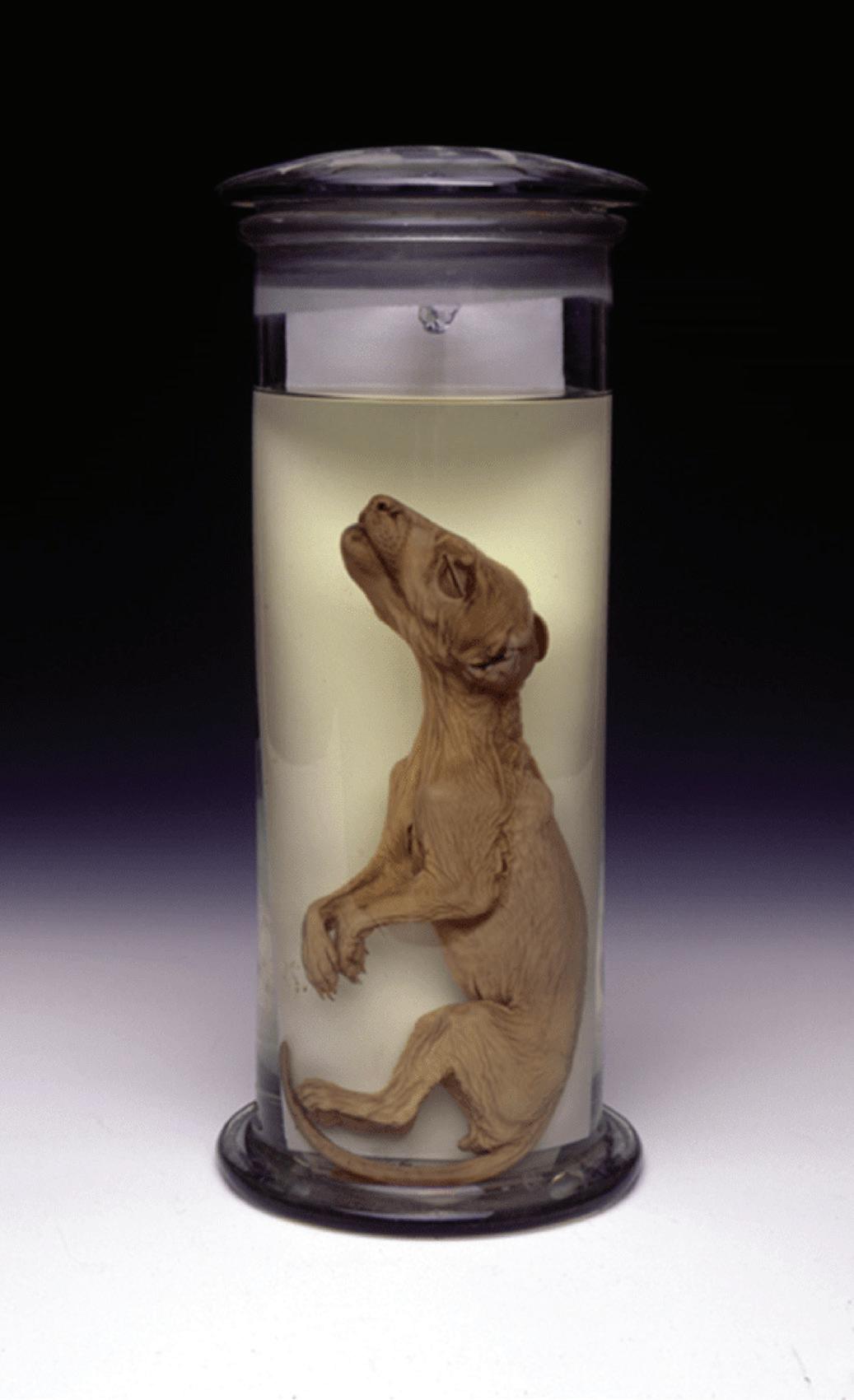
Courtesy of the Thylacine Integrated Genomic Restoration Research Lab.
Benjamin was the last known thylacine. Only two months after the species was granted protected status, Benjamin died from exposure in Hobart Zoo on September 7, 1936, and the species was officially declared extinct.
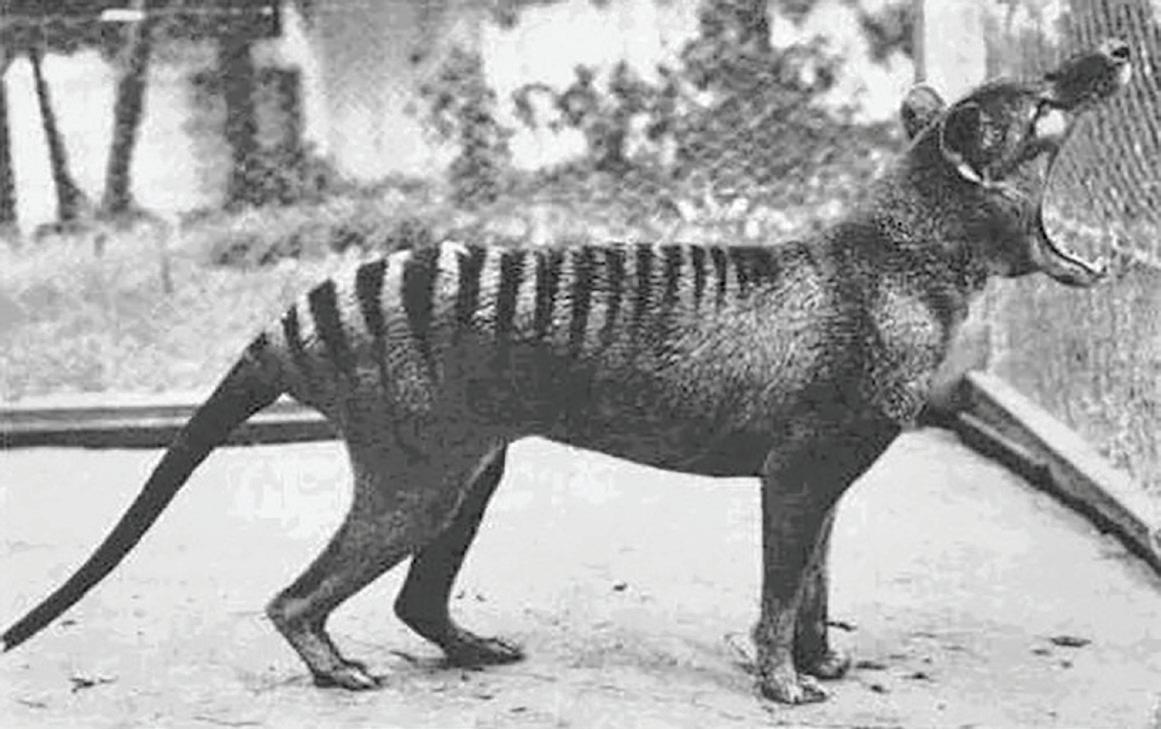
learn CRISPR technology
learn CRISPR technology
Have you ever dreamed of seeing extinct animals? Well, newly developing de-extinction technology can make that happen! Follow these steps to see your dream come true!
Have you ever dreamed of seeing extinct animals? Well, newly developing de-extinction technology can make that happen! Follow these steps to see your dream come true!
sequence the genomes find the differences
sequence the genomes find the differences
Information Provided
Information Provided
By:
By:
Thylacine Integrated Genomic Restoration Research Lab Real Science
Thylacine Integrated Genomic Restoration Research Lab Real Science
edit closest living relative’s genome to match extinct animal’s genome
edit closest living relative’s genome to match extinct animal’s genome
create extinct animal’s cell
create extinct animal’s cell
Unfortunately, DNA degrades over time, and since we need DNA to de-extinct animals, we are not able to bring them back from extinction if their DNA is missing, such as dinosaurs.
Unfortunately, DNA degrades over time, and since we need DNA to de-extinct animals, we are not able to bring them back from extinction if their DNA is missing, such as dinosaurs.
fuse with empty egg of closest relative create embryo of extinct animal take care of it <3
fuse with empty egg of closest relative create embryo of extinct animal take care of it <3
move embryo to surrogate for pregnancy
move embryo to surrogate for pregnancy
Sometimes you wonder how hard it is to take care of a small pet, all the requirements to give your pet a happy life. This article will help you out with understanding how difficult it can actually be to take care of a small pet, or more specifically, a guinea pig
When it comes to small pets, there is a wide variety, but today we will be talking about the wonderful pet guinea pigs. You might be wondering what a guinea pig is. A guinea pig is a big part of the small pet family. A small pet is a small domestic animal that is often viewed as easier to take care of than a larger pet, for example, a dog or a cat. Rabbits, hamsters, guinea pigs, mice, rats, chinchillas, ferrets, and gerbils are all
in the family of small pets, but does that actually make it easier to take care of a small pet just because it is small?
To the surprise of many people, no, it requires just as much care as if you were taking care of a larger pet such as a dog or a cat. Many people think that is easy, but the hard truth is that it’s not, but don’t worry about that or let it give you doubts about getting a smaller pet. This article includes information that will help you out in your journey of getting, raising, and bonding with your small, fuzzy friend.
Guinea pigs have such a great personality according to Dr. Brandon, a professor at Oklahoma State
University. Guinea pigs are intelligent and bold, but can be aggressive when they feel that they are in danger. They live for a decent amount of years, are really vocal, make a lot of noise, and will interact with other guinea pigs. It is recommended to have more than one guinea pig because they are very social animals and it’s most likely to get lonely over time.
But there’s more. After that, you have to think about the expenses of the guinea pig. If you’re a beginner in taking care of a guinea pig or it is your first time taking care of a smaller pet, it’s way more expensive if you already have a guinea pig. You will have to think about the expenses of food and as well need to change the bedding or wash the fabric and the guinea pig’s excrement. As a beginner, you have to think about buying the house, the food, the water bottle, the fabric for its bedding, and the house for the guinea pig. That’s really important because they make the guinea pig
feel safe as guinea pigs are very vulnerable and get scared really easily. Toys are really important because they make the guinea pig feel happy and entertain them, treats as well are a good option when making your guinea pig happy.
Adoption is an option when it comes to getting a guinea pig. Depending on where you live there might be an adoption center.
Buying a guinea pig is a difficult topic depending on the pet store, for example, PetSmart doesn’t really care about the animals. They mistreat them and mass produce them so people like us can buy them. There have been reports of people seeing animals in the trash still alive. The animals get sick and the workers can’t do anything about it and are told to ignore the fact that the small pet is dying. It’s not recommended to buy from big companies. For these reasons, we should stop supporting them. Age is also a big factor that you should consider when it comes
it’s impor tant to take care of our animals and conserve the wildlife
-Galilea Ra mirez
to owning a pet. Dr. Brandon from the University of Oklahoma said that it’s not recommended to give kids a small pet because kids are usually immature and they most likely wouldn’t know how to take proper care of a pet. The pet might feel threatened if children treat it improperly, even if it is unintentional. Guinea pigs are such wonderful pets everything about them is beautiful but if you can’t bring their standards up then you shouldn’t get up, it’s a lot of responsibility to take care of them, there are other options that you can pick, rats are an option they are similar to Guinea pig and are less expensive than a Guinea pig, rats are
intelligent and there is a saying that rats are aggressive but are actually really kind and love you play but if you want a pet that last longer a bunny is other option they are like dogs and require to be all over your house like a dog and are really great companions. Guinea pig are like dogs our even like cats they require the same attention, you have to have in mind the food, the house in which the Guinea pig is going to be in, and it’s usually recommended that you get more that one Guinea pig, Guinea pigs usually get lonely, sad and depressed if not with a partner, don’t get scared if your positive that you have all the requirements
 Pixabay
Pixabay

and wanna get a Guinea pig for yourself go ahead, you should but keep in mind all of this facts. even if you don’t like rodents, “Even although I don’t like rodents, it’s important to take care of are animals and conserve the wildlife” -Galilea Ramirez, We talked with people about their opinions about small pets some didn’t like them but gave great advice that you should still take care of them as much as any other pet, ”just because it’s a small pet doesn’t mean I could be cared less then any other animal”- Safira
Silva Hernandez.
I hope all of this information helps you and reconsider how hard it is to take care of any pet and it’s still not too late to treat your pets like it deserves, thank you.
Cats (25.9)
Dogs (55.6%)

Reptiles (18.5%)
Small pets (18.5) Other pets (22.2)
Usually people want pets that are easy to maintain for example cats and dogs “Cats are the best, they are fluffy and nice and use a litter box, and they clean themselves.” But theres still people that love small pets an think they are as equal as other pets “You can have other pets but give the same amount happiness and be equal.”
This is why small pets aren’t popular among people.
The data collected here had people pick any pet they wanted, small pets or rodents came in the same place as the reptiles. Mostly people want dogs or cats and this show why it’s true .
Do you think small pets is popular among people? no
yes
This shows how much small pets are unpopular within people, Normalizing having small pets as pets is an option “ I think dogs are great pets because they´re some of the only animals that have the ability to reciprocate love”. This is how some people this about his topic.
An example of a Confined Animal Feeding Operation or a CAFO. These systems are extremely unsustainable and unhealthy for both the cows and the people eating them.

Can cattle ranching adapt sustainably to a green future?
You relax after a long day of work, taking a bite of the hamburger you’ve been eating. But, you may know next to nothing about where the cow you are eating came from. Perhaps it lived a good life, able to move around freely and eat whatever grass it wanted or maybe it was chained in a pen, only being able to eat whatever it was fed.
For decades on end, the cattle industry has been an integral part of America’s stability and identity. However, the growing consumption of meat has generated a myriad of controversy. Several scientists and activists alike have advocated for limiting or banning meat, especially red meat, such as beef, citing reasons like cows’ methane emissions and the greater need to deforest to free up land for cattle ranching. On the other hand, meat, and beef, are still extremely popular in the US and show no signs of slowing down.
It all started with corn. Richard Tufton is the chief sustainability officer at Meyer Natural Foods, a company committed to green ranching. “After the Second World War, the government put lots of incentives in place for American farmers to grow corn,” Richard explained. This had several positive effects for the economy, including reducing mass unemployment at the time and providing a cheap source of food for Americans, allowing the population to boom.
Unfortunately, these policies created a lot of extra corn, which, by itself, has very little nutritional value. Thus, the farmers discovered they could feed corn to cattle. Although it contains much more energy than grass, cows are ruminants, meaning, in their four stomachs, they are only designed to eat food like grass and hay, not corn.
Feeding cows corn made them grow much faster, but it also made the cows sick. “Instead of taking three years from when a beef animal is born to when it’s slaughtered, they could actually slaughter it in half that time in about 15 months, because they’re feeding it corn, which is very high energy and causes it to grow really quickly,” Tufton said. “But they also then realized it makes the animal sick, because it’s too much energy.”
What farmers also discovered when they fed corn
to cattle was they could pack hundreds of cows in a small space, each cow in its small individual cell, crammed next to other cows’ cells. This could accelerate their growth even faster, as the cows cannot even lose fat by exercising or moving at all . Systems like these are called confined animal feeding operations (CAFOs).
Sara Faivre owns a ranch called Wild Type Ranch, has testified to the senate committee of agriculture, and is also committed to ranching sustainability. She believes that CAFOs are the most important issue in sustainable cattle ranching.
“The biggest [problem] would have to be the whole issue around CAFOs which are confined animal feeding organization operations,” Faivre said. “Because that has a huge, huge environmental impact, and is not really a long sustainable operation, no matter whether you’re feeding organic feed, it’s still not sustainable, because you’re concentrating all the manure, which then becomes a pollutant.”
The cows’ manure, however, is not the only sustainability concern ranchers have to deal with. Corn fed cattle are substantially less healthy than their grassfed counterparts. “As a human, when you’re eating beef that comes from a cow that’s been fed a lot of corn in its life, the fat is really hard for you to digest,” Tufton explained.“Whereas if you’re eating grass fed grass, finished beef, the fat as a human, you can digest that and it has many more beneficial properties. So it’s much higher in vitamins, but it’s easier for you to digest as a human.”
On top of that, ranchers who are not trying to raise their cattle as quickly as possible and who feed the cows grass or other ruminants, still have to deal with the methane the cows emit. A longer living cow will emit more methane in its lifetime which is problematic because methane is a very potent greenhouse gas.
With all these issues, climate scientists and activists galore have stated a simple solution: simply stop eating meat, especially red meats, like beef. Their argument states that not only are corn-raised cattle very unhealthy to eat, but they contribute to environmental problems like manure runoff, methane emissions, and deforestation, clearing land to grow more corn.
However, people like Tufton and Faivre believe that there is a way to solve these issues and make beef cheaper, although it will reshape the whole industry. In the systems that they envision, many of which already exist, cattle are a net-positive to the environment. They call this the “regenerative agriculture movement.” After all, “it’s not the cow, it’s the how,” as Tufton remarked.
The first step to sustainability is to focus on the soil which the cattle are living on, making it healthy enough to support the cow. Healthy soil can grow nutritious grass for cows to eat and is very resilient to floods, drought, and temperature change, all of which are becoming more common.
“We sometimes say that our cattle farmers really like cattle as the byproduct, what their main focus is, is healthy soil, healthy plants, healthy crops,” Tufton said. “And if you can do that, you can extend the growing season.”
Another benefit to an approach like this is that it is more economically reliable. Ranchers who use regenerative techniques don’t have to worry about dumping fertilizer on soil, spraying pesticides or feeding cattle corn. Sustainable ranching is also much safer, as the soil can adapt to extreme weather more easily.
“We fed focus more on feeding the soil than feeding the grass. And even our local feed store said they
could notice a difference, especially when we get into times of drought, the land was just more resilient, our grass wasn’t growing in the drought, but it stayed green,” Faivre said. “And it recovered faster because the soil and the roots were much healthier…. When your soil is healthy, the soil absorbs water faster, so you mitigate flood damage to some extent. And when you go to a completely sustainable system, your cost of inputs goes down. Your top line revenue, how much money you get, you’re raising less pounds, but you’re also costing you so much less that a lot of producers find out that they’re actually more profitable.”
There are many other strategies ranchers employ to improve their sustainable design. One is the use of cover crops, or plants for cattle to eat while their manure fertilizes other crops, called row crops, which are generally food crops and are being sold for profit. Another method is rotational grazing, which aims to move the cattle regularly in order to not erode a whole section of grass at once.
With all these methods in place, cattle ranching can become a net positive on the environment. “In row crops, the use of cover crops is pretty standard to have animals come in, whether it’s cows or sheep or goats, to have them come in and graze down that cover crop and turn that back immediately into nitrogen and usable nutrients, nitrogen and phosphorus in particular through their manure, that increases the
Left: A free-range grass-fed cow has a little snack in a picture taken by Mr. Tufton
Right: Cattle graze on a sustainably operating ranch

speed of the nutrient cycling,” described Faivre. “And it increases the faster you recycle the nutrients, the faster
gain soil health.”
Unfortunately, there is still the issue of the methane the cows emit. Although healthy soil and grass can sequester or capture carbon dioxide from the atmosphere which methane eventually breaks down into after a decade, it is hard to calculate if the carbon dioxide absorbed offsets the methane emitted. The methane problem is even greater in sustainable systems because cattle are living longer before they are slaughtered, thus emitting more methane.
McCabe said. “Think of it as a small handful of the feed that can drastically affect these emissions.”
There already exist several of these feed additives, some of which are very potent. One of which is called Brominata or red seaweed. “Red seaweed, feeding that to cattle, again, it’s a very small amount that we add on top, it has the reduction of emissions by 80% which was quite impressive for your feeding,” McCabe said.“There’s also other ones, commercial products coming out, one known as 3-NOP that looks to reduce emissions by about 35%, which isn’t as much as 80%, but it’s still a big contributor.”.
Nevertheless, there are already some ranchers who are specifically working on the methane emissions as their primary concern: dairy farmers. As they never had to deal with feeding cattle corn, since the dairy cows must live to produce milk, methane is their primary sustainability concern. Conor McCabe, a dairy farmer, is working on sustainability at the University of California at Davis in the CLEAR Research Center.
McCabe works to reduce methane emissions that cattle produce by changing the diet of the cows because most of the emissions come out from the cow’s mouth in the form of burps. “We can feed cattle, and this isn’t the majority of their diet, we call this an additive because it’s like a small sprinkling on top,”

Although many of these developments are nice, how can you yourself make a positive change? Tufton suggests to “be really mindful of where you’re getting your meat from because it makes a difference. If you’re buying the cheapest pack of meat in the big supermarkets, you’re probably supporting a system which is pretty industrial and not so kind to the planet. So do some research and look into what some of the better brands are, buying grass fed grass finished beef does make a difference compared to grass fed corn finished beef, is it more expensive? Yes, but it’s going to be much more healthier. It’s going to be more healthy for you, it’s going to be more nutrient dense for you, and it’s going to be better for the planet and for the animals.”
All in all, some ranchers and farmers are working together and employing various strategies that may reshape an entire industry. As the threat of climate change looms over all, they are doing the best they can to both mitigate the damage cattle cause and maximize the adaptability of their systems. They are putting their blood, sweat, and tears into making sure the cheap hamburgers and luxurious steaks you eat are the best for you and for the world. D
you
“Be really mindful of where you’re getting your meat from because it makes a difference. If you’re buying the cheapest pack of meat in the big supermarkets, you’re probably supporting a system which is pretty industrial and not so kind to the planet.”







Use this flowchart to determine if a snake or spider you encounter in Texas is venomous.
By: Kai BentonMost of us know that Texas has large deserts, and with that comes many venomous or poisonous animals. Still, very few spiders and snakes in Texas are poisonous or venomous and even fewer are harmful to humans. An important distinction to make here as well is the difference between poisonous animals and venomous ones. Poisonous animals contain poison inside them, to prevent other animals from eating them, like the monarch butterfly. On the other hand, venomous animals actively seek out prey to deliver their venom. This flowchart will help you determine whether a spider or snake is venomous or not, given you are in Texas. Beware, there are many animals which try to impersonate venomous animals to scare away prey, but they are imposters, and are much more common than the actually venomous ones.

How big is the spider?
Less than 1 inch in length 1-2 inches in length
The spider is not venomous.
Spider Snake
Is the animal a snake or a spider?
Longer than 3 inches
The spider is probably a tarantula, which aren’t venomous.
What color is the spider?
Is there a red or orange hourglass shape on the abdomen of the spider?
Is the spider tannish yellow with black feet?
Is there a violin shape on the body of the spider?
The snake is a copperhead, which is venomous.
It is a coral snake, which is venomous.
The spider is not venomous.
The spider is a brown recluse, which is venomous.
Repeating brown hourglass
What patterns are there on the snake?
Red, yellow, and black stripes
What order are the stripes?
The snake is not venomous.
None/ other
Is there a hole in the head between the snake’s eye and its nose?
The spider is not venomous.
The spider is a black widow, which is venomous.
It is a yellow sac spider, which is venomous.
Is there a orangish-red hourglass shape on the spider’s abdomen?
The spider is a brown widow, which is venomous.
Is the interior of the snake’s mouth white?
The snake is not venomous.
The spider is not venomous.
The snake is a cottonmouth, or a water moccasin which is venomous.
Is there a rattle on the tail of the snake?
It is a rattle snake, which is venomous.
You are in a box around the size of a bathroom stall, with no way out. A few times a day, a hamburger falls from the ceiling. You just pace back and forth, traversing with what little space you have. You are all alone, trapped in a little box for your whole life. You are a pet goldfish.
All across the world, there are pets that may not be taken care of properly, and their owners just don’t know they are doing anything wrong. Not taking care of your pet properly can lead to longlasting problems and even the death of your pet. However, it is not inherently bad to keep an animal as a pet, as long as you are taking care of them properly. Owners of cats, dogs, birds, and even fish end up forming deep bonds and connections with their pets and end up considering their pets as their children.
Cadence Tanner is the nonprofit secretary of Magnolia Exotic Bird Sanctuary, and she has seen some of the best cases of bird ownership, and some of the worst as well. With about 160 birds in their care and about 20 aviaries, Magnolia Exotic Bird Sanctuary is the only bird rescue in Texas that works on such a large scale as they do. According to Ms. Tanner, most of their birds come from senior citizens that don’t realize how long birds live. Their birds end up not having anywhere to go because the senior citizens have to downsize to somewhere that does not allow birds, or they pass away and there is nobody to take care of the birds.
However, senior citizens are not the only
place they receive birds from. They also receive birds from animal cruelty seizures. “We always say, ‘all birds bite,’ and when that happens, oftentimes that’s when they get abused,” Tanner said. “[They] get neglected, ... hit to the ground, locked up in a cage, and never come out again. It’s not the bird’s fault.” One case of animal abuse was an Amazon parrot named Gabby, whose beak seemed to have been crushed by pliers when they received him.
But most of the time, people that aren’t taking care of their pets properly just don’t know they are doing something wrong. “They’re just not educated,” Tanner said. “I mean, we have Google now, it’s like, gosh, at least start investigating right?... So many people are uneducated and they want a pretty ornament, they want a bird… they only want a bird that talks, and, birds are wild animals.”
“They need a lot of different things to do… [T] hey need toys that they can chew up… I’ve talked to people before that said ‘I started buying metal toys for my bird’ because bird toys are expensive, and some of them don’t last but two days,” Tanner said. But it is not just toys that are expensive, the food is expensive, cages are expensive, and even vet bills are extremely expensive. Birds cost a lot of money, and also have a huge time commitment as well. “They require extensive room, enrichment, which is, they have to have plenty of things to do all the [time]. They’re like the intelligence and personality of a three to five-year-old,” Tanner said. “But they stay that way for 50 years, unlike humans, we grow up right? They stay right there for their entire lifetime.”
Mr. P is a parrot who was received at Magnolia Exotic Bird Sanctuary. When they received him, he was unable to open his beak. The only way that he could eat when they received him was by shoving his food into a tiny spot on the side of his beak. After two years of surgeries, physical therapy, and medications, and a total expense of about 10000 dollars, he can now open his beak. Photos courtesy of Magnolia Exotic Bird Sanctuary.
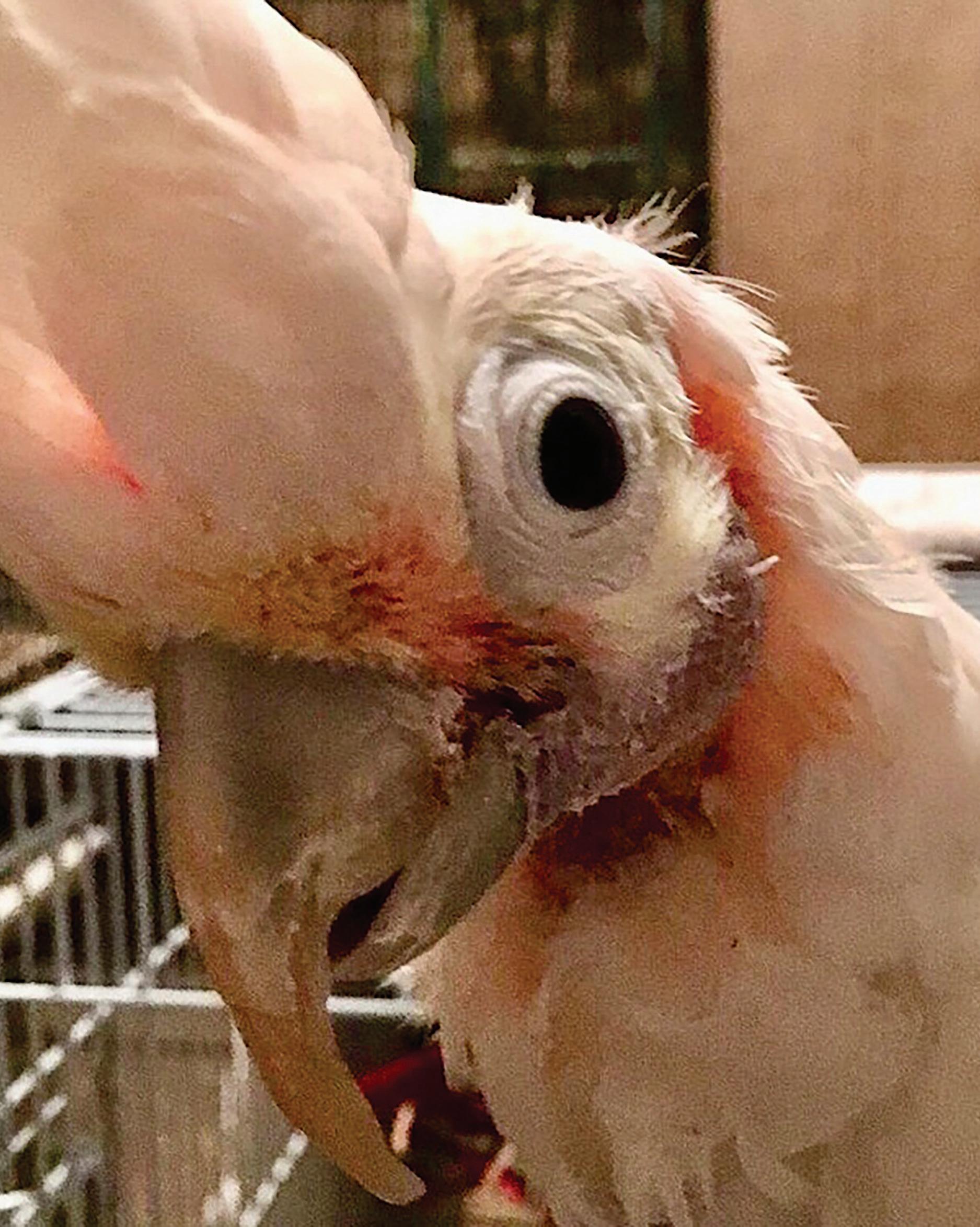

Birds take a similar commitment as there is to children. Like children, they have high costs and time commitments, but they also form bonds with their owners like children do with their parents. Most issues with birds not being taken care of properly stem from people not realizing that they are just children with feathers.
However, sometimes owners may have to leave their pets, whether that be because they have to go to work, or they are going on vacation. When asked what one should do when they leave their bird, Tanner said, “[I]deally, if you were leaving for an extended period of time, you would travel with your bird... While people [are] at work, their parrots are in a cage where they’re safe, and the cage is extremely important as to its size.” In fact, there is even a formula using a bird’s wingspan that you can use to find the minimum cage size that you can have for birds.
However, birds aren’t the only pets that people may have concerns about leaving home
alone. Dr. Janet Reed has a PhD in Wildlife and Fishery Sciences, and she also currently runs a pet-sitting business. When asked what was an acceptable amount of time to leave a pet at home, Reed said, “For a cat, as a pet sitter, I require oncea-day visits, so 24 hours… would be the maximum I would recommend a cat being left home alone. And the reason for that is so many things can happen. Cats… are very curious. They might get bored… [they] might get themselves stuck somewhere,” Reed continued to explain that for cats, the main concern when leaving them home alone is health issues and that by checking on them every 24 hours you can catch any emergency health situations. “For a dog, [there must be a] minimum [of] 12 hours [between visits]... [I]t depends on age, activity… the breed, [and] what the dog is accustomed to,” Reed said. “[As for] puppies, I would not leave a puppy alone… at all… [A] s a pet sitter, I always recommend that people board a puppy or have a family member take care of the puppy. And this can go up to age two just because
puppies require a lot of attention.”
Because of the major price and time requirement to take care of a pet, some people try to find a pet that they don’t think will require a lot of work. One of these pets that people turn to is a fish. Bradley Jullian is the founder of Texas Fish Rescue, a nonprofit organization that takes care of surrendered fish. While this may seem like an oddly specific organization, there is actually quite a need for them. “[W]e were created taking people’s fish, you know, regardless of the situation… [A] lot of people came up on hard times, during that pandemic,” Jullian said. “I just saw a need for people, that needed to rehome fish and not everybody was… willing or could take everything or, they just wanted a couple [of] specific fish for their collection. I made it to where I would just take in anything regardless as long as I had the space store.”
stores are the worst. They have a lot of fish tanks in…big box stores. They’re getting better about how they take care of their fish, but they are some of the worst with taking care of fish. They’ll dump a hundred fish into a small fish tank just because that’s what they have room for... [A] lot of the time it’s more about just selling the fish for them instead of making sure that [the] people that are buying the fish essentially have the proper setups for [them].”

Contrary to what popular belief may be, keeping a pet fish properly can be a complicated and expensive process. Depending on the type of fish and the number of fish, both the price and the time commitment can vary. “[I]f you’re just keeping a couple [of] fish in a personal tank, it’s not gonna be bad. Once a week you’ll need a couple [of] hours to do partial water changes, whether it be like 25 to
50% water changes, checking your filters and stuff like that,” Jullian said. “Salt water is a very expensive hobby. That’s the best way I can describe it. For me, I have a personal saltwater tank and just monthly maintenance on it probably runs me two to $300.” While fish may be thought of as easy pets to take care of, they are oftentimes not taken care of properly. But it is not just the owners who are at fault for this, it is also the pet fish suppliers. “[P]et stores are the worst. They have a lot of fish tanks in… big box stores. They’re getting better about how they take care of their fish, but they are some of the worst with taking care of fish. They’ll dump a hundred fish into a small fish tank just because that’s what they have room for,” Jullian said. “[A] lot of the time it’s more about just selling the fish for them instead of making sure that [the] people that are buying the fish essentially have the proper setups for [them]. I
“[P]et
-Bradley Julian
think a lot of times… if a goldfish or any other small fish in general… [is] not taken care of properly, it’s just because the people didn’t do their research, and they don’t understand what their fish need. And I think that responsibility lies up to … the stores. If you go into the store to buy a betta fish, … you need to make sure you have the proper setup. And that’s not just like the little five-gallon glass bowl. You know you’re gonna need a heater and a pump and stuff.”

All pets require major time and financial commitments. When adopting a pet, you have to realize that you are going to have to take care of them for a very long time. When you are thinking about purchasing a pet, you need to do your research. Before taking any animal into your care, you must make sure that you are fully prepared. This can mean preparing a fish tank by setting up beneficial bacteria, buying toys, equipment, and setting up a
plan for your pet if you die. You can’t just adopt a bird or a fish as a decoration, and you should never expect having a pet to be easy. At the end of the day, pets are living creatures, and they deserve to be treated as such. Before you adopt a pet, you should always look into how to take care of them, and also the cost, along with lifespan. When you adopt an animal like a bird or fish that you may not know much about, you may expect them to live for about as long as a cat or a dog. Thinking this can lead to several issues later on, including your pet outliving you. Despite all of the challenges and commitments that come with owning a pet, owning a pet is a rewarding and enjoyable experience. When owning a pet, the amount of effort that you put into taking care of your pet will correspond to what you get out of having a pet. c
According to the data collected from a survey, about 79% of people think that it is not cruel to keep goldfish as pets, and 21% of people belive that it is cruel to keep goldfish as pets. However, most of the people who responded said that it depends on the situation for wheather it is cruel or not to keep goldfish as pets. It seems that most people belive that if goldfish are kept well, it is not cruel.
Goldfish are one of the most common types of pets in our society, however, the average person does not seem to know much about them. Commonly seen on top of a child’s dresser in their bedroom, in a small tank, they are infamous for their short lifespans. While it may seem that the only people who have goldfish are small children who end up killing them quickly, there is actualy a complex world of goldfish behind the mask of short lifespans and elaborate funerals conducted by families.
1.72 Years Old
According to the data collected from a survey, about 60% of people have had a pet goldfish. According to the survey, that means only 40% of people have not had a goldfish.
The average lifestpan of a goldifish in captivity turns out to be about 1.72 years old according to the data collected by a survey. This is a suprise, since according to google it should be at least 5 years on average. To put this short lifespan in perspective, goldfish in the wild live for 20-40 years on average
When you hear the word “goldfish” you may think of one particular type of goldfish, but in reality, the term “goldfish” is more of an umbrella term like “cat.” There are several different types and breed of goldfish that you may have never heard of. Here is a brief look at some of these fish.
This is a Ranchu goldfish. Ranchu goldfish have a delacte textured growth on their heads called wen. They also have no dorsal fin and a humpback. They are also refered to as “the king of goldfish”
This is the Bubble Eye goldfish. They are easily recognizable by their upward facing eyes and the fluid filled sacks on the sides of their face. The sacks on their face grow with the fish and are extremely delicate. The Bubble Eye also lack a dorsal fin.
This is a Telescope goldfish. They have protruding, or telescopic eyes. Their eye protrutions are angled forward, and they have poor eyesight. Like most “fancy” goldfish, they have double fins, and while they are less delecate than Bubble Eye goldfish, they still need a safe environment to protect their eyes.
This is a Celestial Eye goldfish. They are easily recognizable from their upturned protruding eyes. They have extremely poor vision, and are considered by some to be the hardest fish to keep. They also lack a dorsal fin.
This is a common goldfish. It is just your everyday goldfish, whith nothing that special about it. They are quite hardy, and while they live and average of 10-15 years, they can live over 20 years and reach sizes of 12-14 inches.
A swarm of Mexican Free-Tailed bats surges out of Bracken Cave in Central Texas, which is home to the world’s largest bat colony, and is featured in many nature documentaries. Courtesy of Flickr.
 By Ryder Armstrong
By Ryder Armstrong
Sweeping desert vistas, thick vivacious scrub, and brilliant spring fed rivers. From the rare blind catfish to the majestic mountain lion, the biosphere stuns the senses. This is the glory of Texas.
More specifically, this is the glory of Deep in the Heart: A Texas Wildlife Story, a nature documentary on the natural wonders of Texas. Released on June 3, 2022, it covers animals from the tiny Texas Blind Salamander to the giant American Bison. Narrated by Matthew McConaughey and directed by Ben Masters, it is the first Texas wildlife documentary. On a mission to raise awareness about endangered Texas wildlife, they crossed the state, filming species after species.
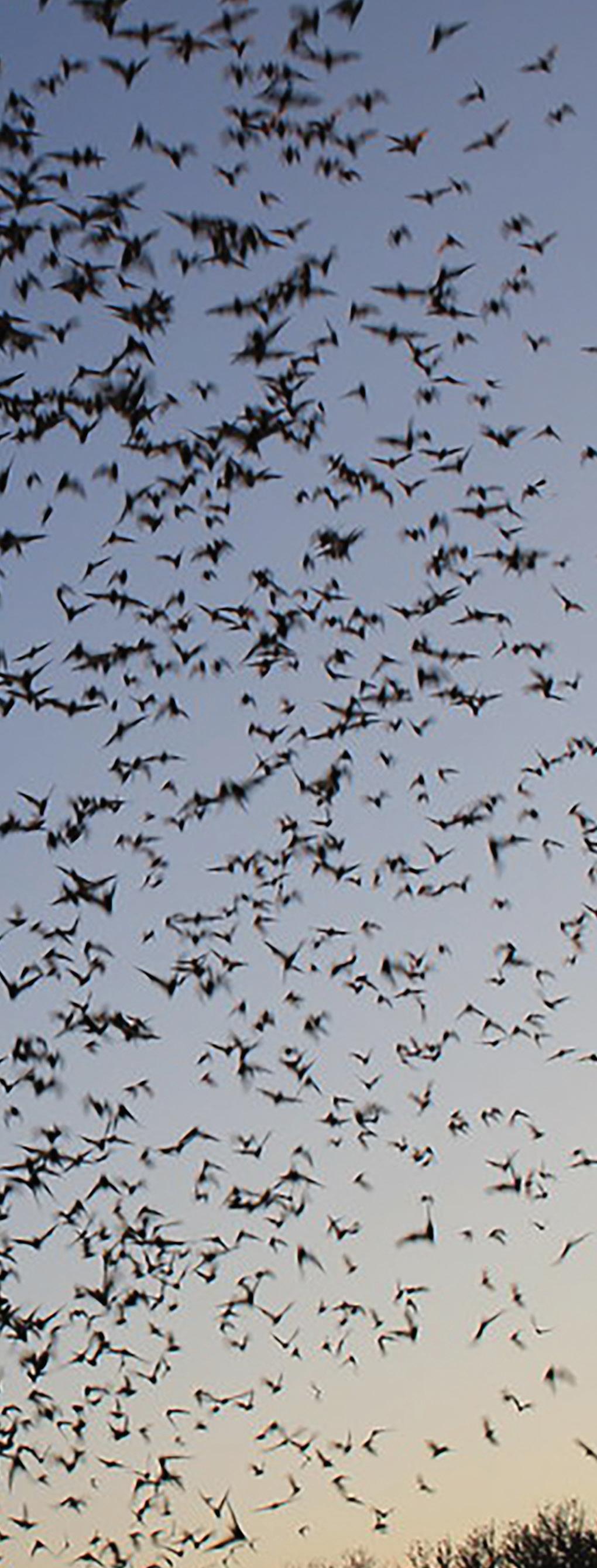
Skipp Hobbie, an Austin based freelance wildlife cinematographer, was the director of photography for Deep in the Heart. He said that the movie’s origins began far before it became a reality.
“It was 2015 or 2016,” he said “[Ben Masters] reached out to me, he must have found my website as one of the few people in Texas that professionally films wildlife. He said that one of the next projects he wanted to do was about wildlife and conservation issues across the whole state of Texas and would I want to be interested? I didn’t know anything about Ben at the time, but he said he was going to try to raise a million dollars to make a good documentary.”
The first scene that the team filmed, and the first scene in the movie, was of a group of Bison in a snowstorm. While it was a struggle to capture, it ended up paying off.
“I always thought if it was a chance to film the bison in a snowstorm, we should do it one year after year. There’d be these big snowstorms that would hit and it would always happen when I was busy or I was somewhere else in the world filming for some other project. then one year the day after Christmas,” Hobbie said. “It looked like there was going to be a big snowstorm up in the Panhandle where the bison live. So my now wife, Ben, and I raced up there to get there before the snow got there. Then for a few days, we were pretty snowed in. But we just filmed all the bison we could … [using] long lenses or telephoto lenses that can be 300-millimeter and 800-millimeter
lenses to get you closer to the animals.”
When the time came to film Mountain Lions, telephoto lenses weren’t going to cut it. Hobbie’s team was going to have to deploy camera traps at a watering hole and monitor them continually.
“We had one chance every ten days to try to get some shots as he came through. A lot of times, things wouldn’t work, or he wouldn’t come the way that we predicted. We just had to make adjustments, so we had a team that worked really hard because it’s not an easy place to get to,” Hobbie told me. “They had to hike way down into this canyon with all those heavy batteries and cameras. Week after week, they went back to check the footage, change the batteries, download memory cards, and make changes.”
A really special moment for Hobbie happened the one time they got footage of a cat without a camera trap.
“I sat out there for 14 hours a night, and only saw in total between the two times he visited. I saw that ocelot for about five minutes in total out of 10 nights sitting there for 14 hours. That was a really special and memorable thing. I had the blind completely closed down around the camera lens so that the ocelot wouldn’t be scared off by any light or movement or sound from me in there.” He said. “Once he was there, and he was drinking, he was really thirsty, that might be one of the only places with water and his whole habitat. He has to visit at least once a week, probably to drink. Once he was there and drinking and I had the camera just set up and recording. I had

to just peek open the window a little crack so that I could see that ocelot with my own eyes and that’s something I’ll remember forever.”
Lindsay Martinez, an A&M student who founded the Recover Texas Ocelots foundation with her professor, researches the viability of reintroducing ocelots to their historic range in Texas. She says that a very important part of ocelot conservation is working with private landowners.
“Private landowners may be nervous that if they have an endangered species, there are going to be a lot of rules placed upon them to make them bear the responsibility of protecting that animal in the habitat. If you own a farm, cattle ranch, or oil field, you want to be able to keep doing those activities, even when an endangered species is there,” Martinez said. “But … the East Foundation, which is this group that owns six big ranches in South Texas, and one of them is the one I mentioned that has more ocelots than anywhere else that we know of. Then they also have a second property that is more inland from the coasts and has a really big swath of potential habitat. The East Foundation has this whole ethic of land steward-
An ocelot stretches it’s way down a bleached tree trunk. Courtesy of Flickr“Once he was there and drinking and I had the camera just set up and recording. I had to just peek open the window a little crack so that I could see that ocelot with my own eyes and that’s something I’ll remember forever.”
ship, wildlife research and conservation, and making that work with cattle ranching. They’re a symbol of Texas, they’re this beautiful cat that doesn’t cause any problems to people.”
Collaborating with landowners requires collaborating with other groups—namely the U.S. Fish and Wildlife service. There are some contracts and permits that must be done to ensure the Ocelots can thrive.

“[The] US Fish and Wildlife Service … develop[s] some kind of agreement that says, these landowners are going to provide this to the ocelots, they’ll be able to help release them and monitor them with cameras and maybe do some other things, then in exchange, the US Fish and Wildlife Service is not going to ask them to do additional conservation things beyond that agreement,” Tamu told me. “So that sort of political dimension of partnering the Fish and Wildlife Service with the landowners is a really important one”.
Finally, she told me the best thing folks living in ocelot country can do is to simply drive safely.
Martinez said, “For folks in South Texas, there are things they can do to protect ocelots. A lot of times we talk about the importance of safe driving around
Ocelot habitat because vehicle collisions are the number one thing that kills ocelots.”
In another area of Texas, a different cat species is struggling- the Mountain Lion, but they have potential help on the way. Patricia Harveson, a retired professor and research scientist of mountain lions, said that Deep in the Heart is an important part of the Texas conservation story.

“Ben Masters and the team at Fin and Fur films have done an amazing job capturing incredible footage that profiles many conservation issues.” Harveson wrote, “Not many people knew about the status of Mountain Lions in Texas and they had no regulation or management by the Texas Parks and Wildlife Department.”
Deep in the Heart is a beautifully crafted film highlighting the natural wonders of Texas. It shines a light on endangered species across the state and appears to already be having an impact. I highly recommend that you watch it, and spread the word about endangered species in Texas. D
A majestic Mountain Lion staring down the camera. Courtesy of Pexels.

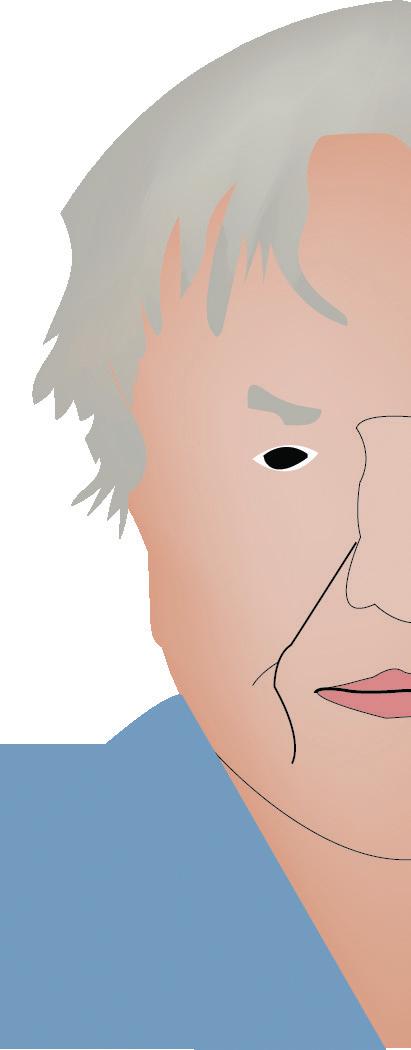
Highest grossing is an unusual term, as it is similar to gross, as in disgusting. However, in the film industry, grossing refers to the amount of money a movie makes. The methodology used to create this list was fairly simple, as a list of the highest grossing documentaries is available on Box Office Mojo. I decided whether each one was a nature documentary- for instance, UndertheSea3dis a nature documentary, but 2016:Obama’sAmericaisn’t. The hardest call was AnInconvenientTruth , which I decided was not a nature documentary due to the lack of wild animals in the trailer. Then there is the ultimate question- why no Attenbourough? It is worth noting that Earthis based on the TV series PlanetEarth , narrated by David Attenbourough, but the movie adaptation isn’t. Instead, it was narrated by the celebrity actor James Earl Jones. A similar thing happened for Oceans . While David Attenbourough is one of the greatest nature documentary narrators, he tends to have his greatest successes in TV series. For instance, PlanetEarthmade $108 million, according to Wikipedia.
1. March of the Penguins (2005) $77,437,223 Narrated by Morgan Freeman






3. Earth (2007) $32,011,576 Narrated by

2. Under the Sea 3d (2009) $36,262,926 Narrated by Jim Carrey
4. Chimpanzee (2012) $28,972,764 Narrated by Tim
James Earl Jones

5. Born to be Wild (2011) $25,978,556 Narrated by Morgan Freeman
6. Oceans (2009) $19,422,319 Narrated by Multiple People
7. Bears (2014) $17,780,194 Narrated by John C. Reilly
8. Monkey Kingdom (2015) $16,432,322 Narrated by Tina Fey
*In case you don’t know, David Attenborough is the best nature documentary creator of all time Think about how much good David Attenborough has done. Love him. Appreciate him. RESPECT him.

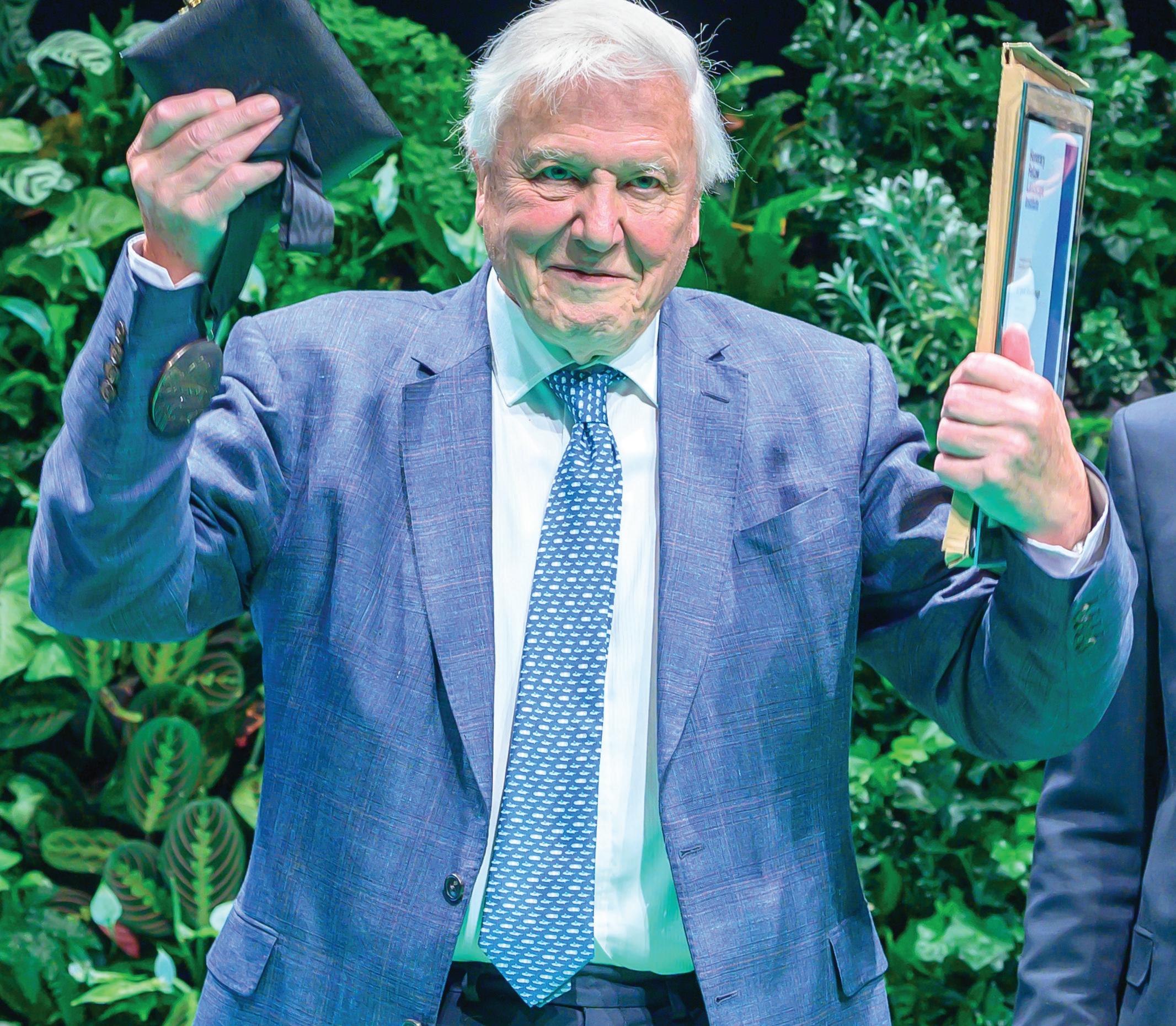


Void where prohibited. No representation or warranty, express or implied, with respect to the completeness, accuracy, fitness for a particular purpose, or utility of these materials or any information or opinion contained herein. Actual mileage may vary. Prices slightly higher west of the Mississippi. All models over 18 years of age. No animals were harmed during the production of this product. Any resemblance to actual people, living or dead, or events, past, present or future, is purely coincidental. This product not to be construed as an endorsement of any product or company, nor as the adoption or promulgation of any guidelines, standards or recommendations. Some names have been changed to protect the innocent. This product is meant for educational purposes only. Some assembly required. Batteries not included. Package sold by weight, not volume. Contents may settle during shipment. No user-serviceable parts inside. Use only as directed.